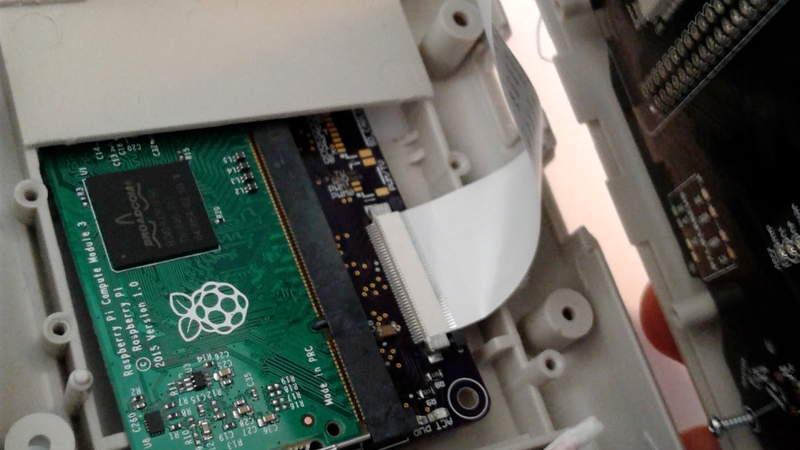[inches] wanted the power of a Raspberry Pi 3 in a form factor closer to the Pi Zero for a Game Boy mod. This led him to design a custom PCB to interface with one of the less popular items in the Raspberry Pi line: the Compute Module 3. A hardware comparison between the three platforms is available here.
After correcting some minor issues, it booted correctly on the first try. The final result is slightly larger than a Raspberry Pi Zero, but significantly smaller than the Raspberry Pi 3, and fits perfectly inside the Game Boy for a clean build.
The Raspberry Pi Zero remains difficult to source in some parts of the world and can cost nearly as much as the more powerful CM3 (e.g. in Southeast Asia). If you’re comfortable making a breakout board and benefit from the added computing power, it’s a reasonable option when it needs to be small.
Worth noting is that the Raspberry Pi Foundation does sell an open-source development kit for the CM3 that has been used in some projects, but the retail cost is relatively high compared to a Raspberry Pi 3. Smaller but less feature-rich breakout boards like the one by [inches] make the CM3 more accessible.
Thanks to [Lou Hannoe] for the tip.















This may be the first time I’ve seen someone actually use the Compute modules for anything. I’m surprised the RasPi Foundation still makes them.
They are a huge thing for industrial customers. The compute module is not targeted at the “maker” market.
Then again, its not so hard to make your own board. If you just need IO, SD and USB/Ethernet, its not much at all: https://hackaday.io/project/21969-crappy-raspberry-pi-compute-module-breakout
I can vouch for the industrial uses. We’re currently designing a product that uses 16 CM3 Lite boards in a 1RU chassis. Our projected sales means we’ll likely need tens of thousands of CM3s.
Clustering?
Nope.
I don’t think I’m allowed to say much, but our application isn’t clustering… we just happen to need a bunch CM3s in one box. Each will perform the same task independently from the others. Because of other processing constraints in the system, our use of CM3s scales linearly in groups of four.
Will anybody somehow know that you said something, and even then, Nobody is askig for your info or company name…. tell us more pls.
Video work then.
>Our projected sales means we’ll likely need tens of thousands of CM3s
im speechless, are you really hedging your business on whims of one supplier of low volume modules? :o
unless you used famous xkcd 605 school of predicting sales
Two suppliers, both RS and Farnell are licensed for producing Compute Modules / Raspberry Pis.Low volume is also a quite an understatement for a product that gets produced in the hundreds of thousandth every year.
The demand is in the millions, but supply is in the hundreds of thousands. They clearly lied to me via email when inquiring about purchasing for my makerspace in Japan. Personally, I wouldn’t use a pi for anything more than individual personal hobby projects. I certainly won’t be buying them for meetups or makerspace projects even if I could. I’m not sure what they’re thinking on the business side of things.
How many did you need? Farnell usually has around 15-30k of Raspberry Pi 3’s ready for dispatch the same day…
Not hedging the business here. This is just one product we have and the only one using Raspberry Pi in any real quantity. We’re an established business and this is sort off a one-off, proof of concept product that will meet one customer’s needs in the short term. The hope is that this is a stepping stone for transitioning to a module we design and produce ourselves.
Our sales department might work that way… I’ll stick to Engineering.
So when do we see an “official” Classic Gameboy with 30 full classic games on it?
It’s also used on the upcoming Freeplay CM3 (that fits in a GBA-style shell).
See https://youtu.be/pKMYFjm-5kk
Very similar to my project except I’m using a gameboy advance case instead of an original gameboy https://hackaday.io/project/17935-piboy-64
I like how clean inches executed this build.
This is nice. :-)